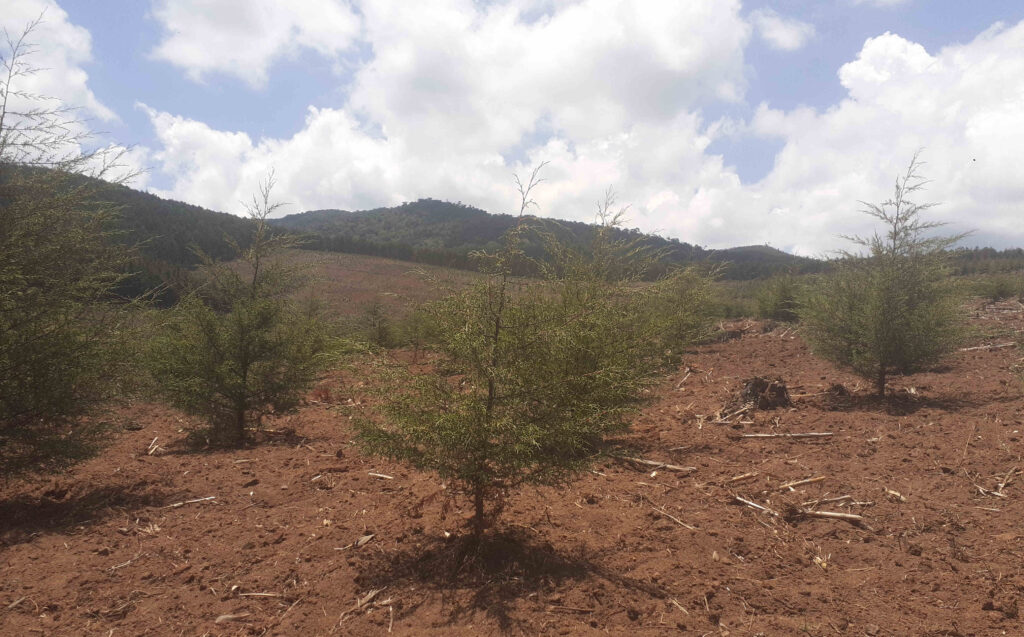Transforming a hillside and a community: Satellites help tell the story – *Updated*
We’re excited about using satellite technology to help monitor progress, including improvements to the environment and the community, due to the number of trees that we are helping to plant. Here is a satellite photo from 2017 of a 48-hectare plot of land (or “AOI” – area of interest), outlined in red. This is the Kwezizi region on the northern edge of the Magamba Nature Reserve in Tanzania.
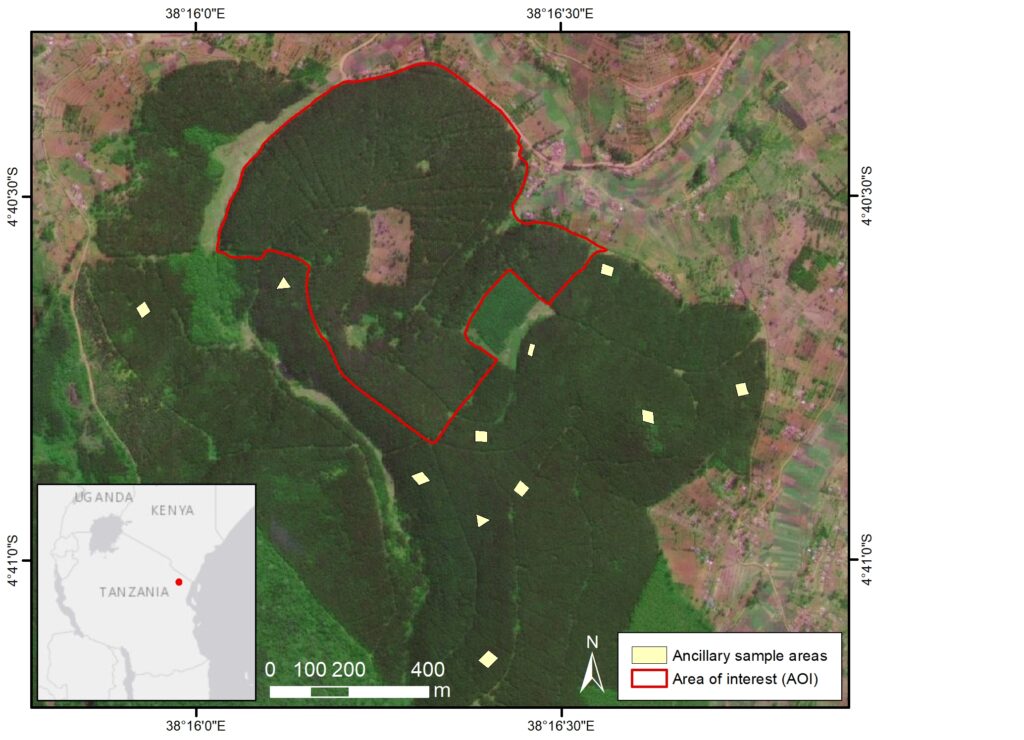
You’ll see that in 2017, this AOI was a healthy adult forest. This image was prepared by our partners at GMV, based in Madrid, Spain. GMV is a privately owned technological business group founded in 1984, and offers services and products in a variety of sectors: Aeronautics, Banking and Finances, Space, Defense, Health, Cybersecurity, Intelligent Transportation Systems, Automotive, and Telecommunications. GMV provides important third party monitoring, evaluation, and validating information that helps confirm the ground level efforts are working.
GMV analysis estimated that there were ~40,000 trees in the above AOI in 2017. However, after just a few years of drought, fires, and agricultural mismanagement the land was left burned and scarred.
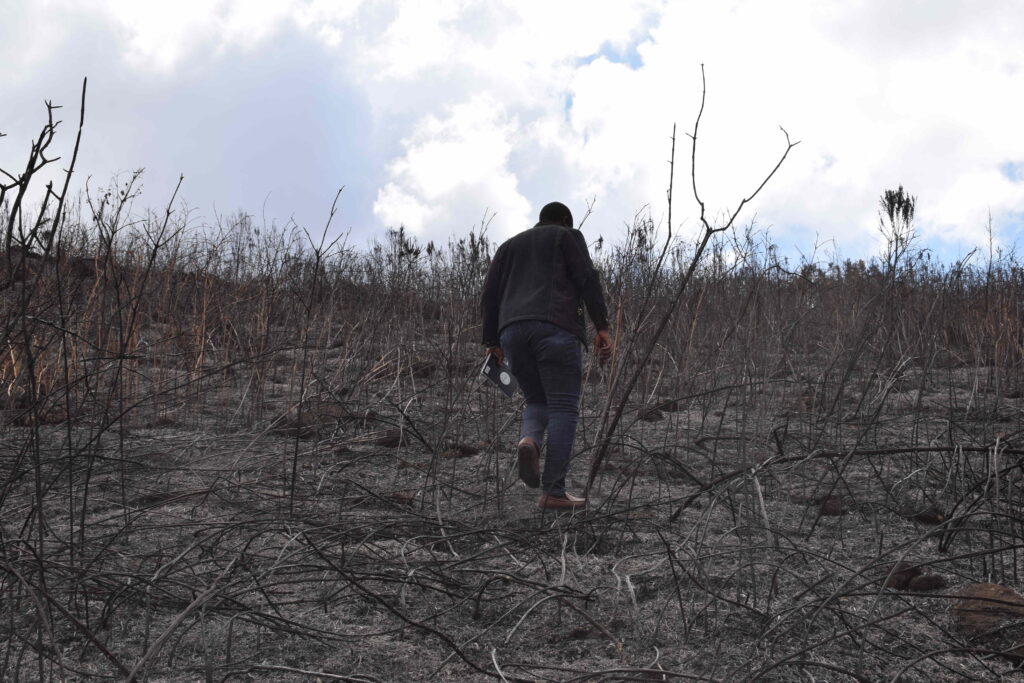
The devastation could also be seen from space, as the following three images reveal:
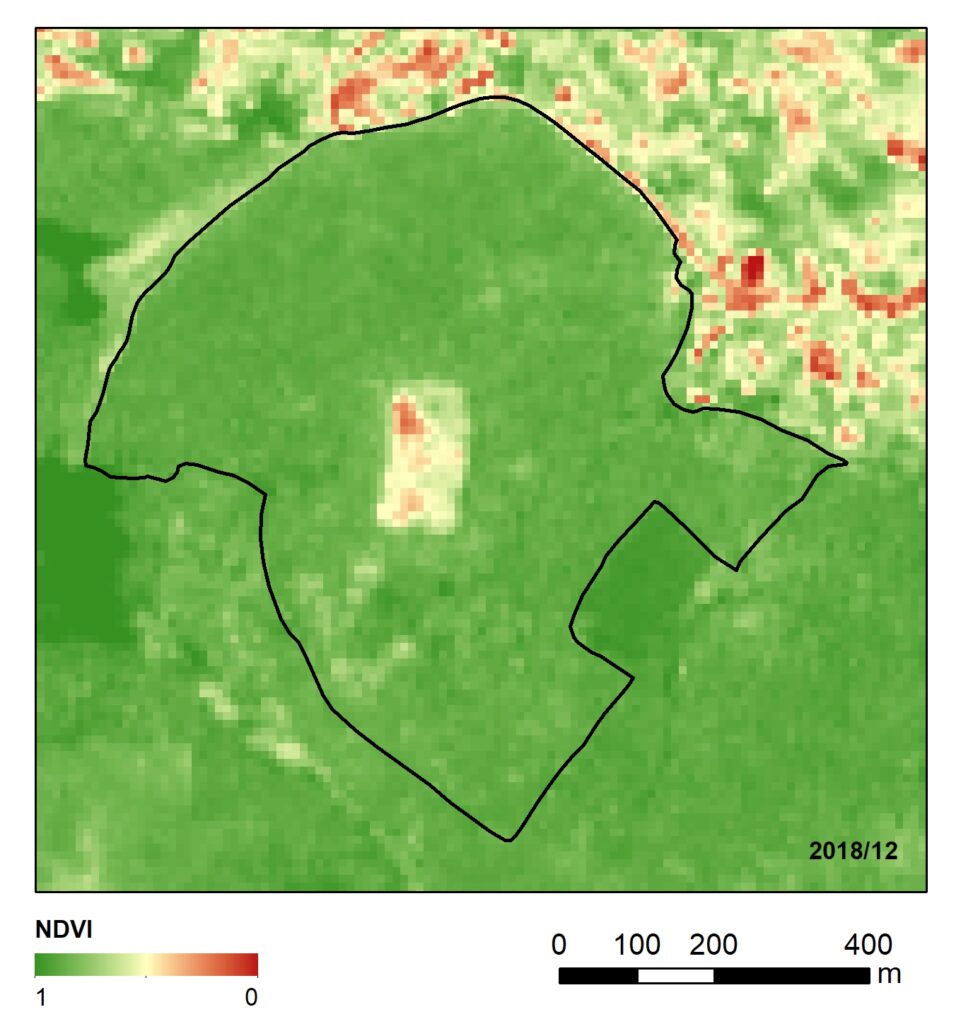
The above measurement of photosynthetic activity was taken in December of 2018 and is a graphical representation of NDVI values. NDVI stands for Normalized Difference Vegetation Index, which is a commonly used measurement of vegetation health. A detailed description can be found here, but basically the greener the image, the healthier the plants.
This next image is from early 2019, and the red areas show where plants have been damaged or destroyed by fire. Short-sighted agricultural practices exacerbated the problems.
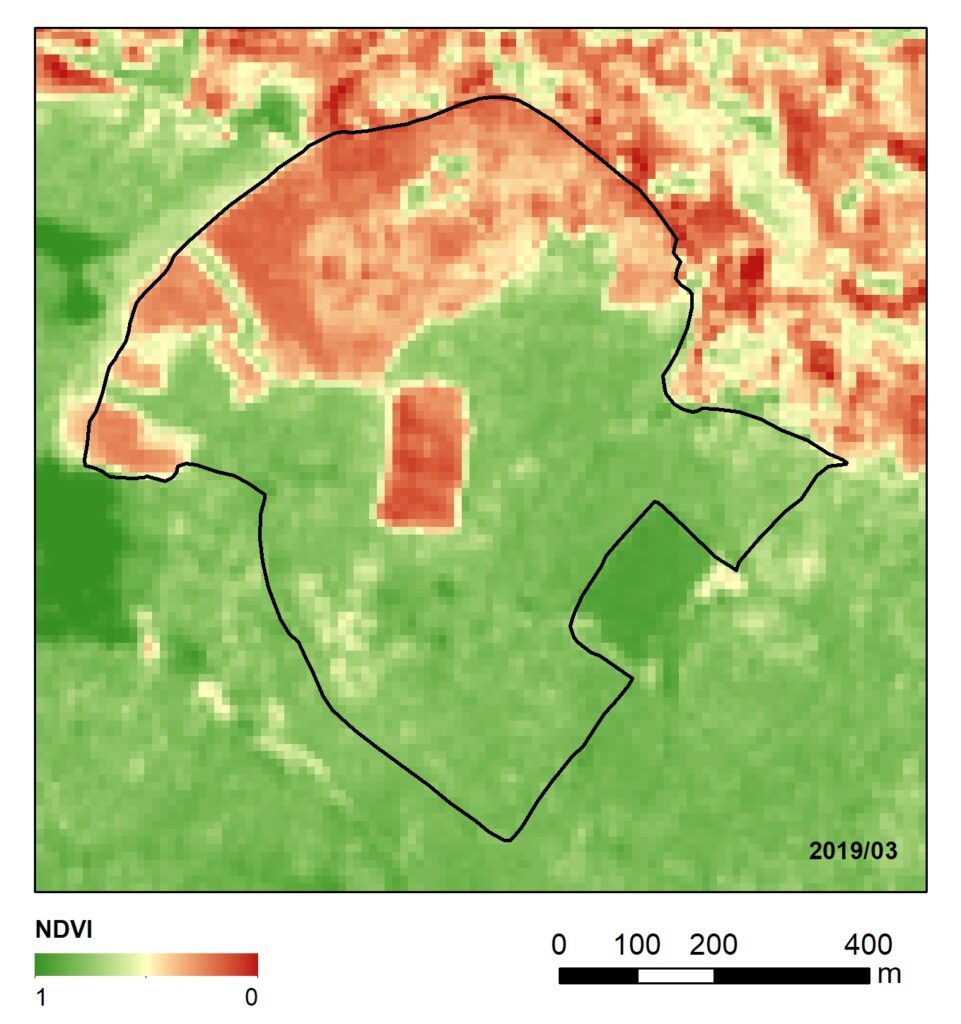
And just a few months later, the whole AOI shows severe damage:
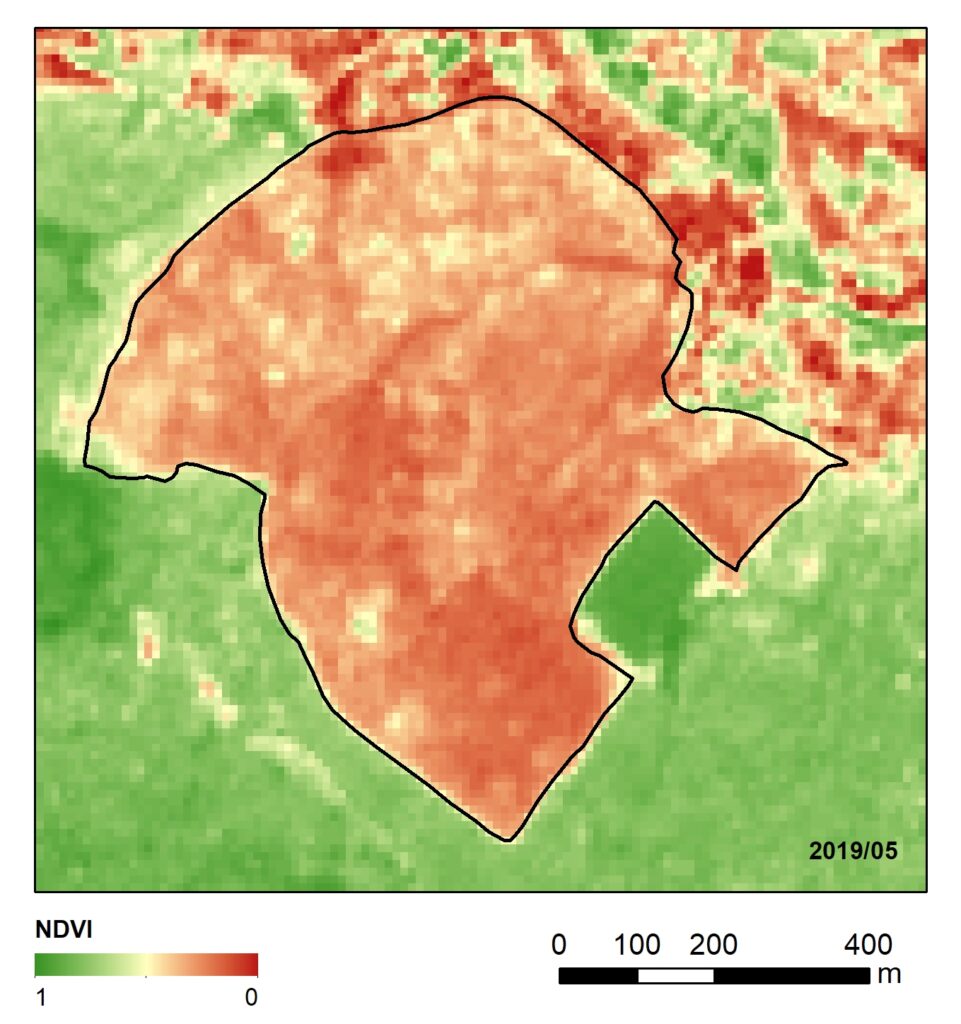
One critical casualty of this degradation was the local water supply. The mature trees helped capture rainwater in this hilly area and keep it from rushing away in torrents. After the destruction of the mature trees, what rainwater that did fall was not getting channeled into the aquifers. This led to water shortages for the region’s villagers, and people started to move to the already overcrowded cities.
With support from ForestPlanet, a re-planting project was launched by the Friends of Usambara Society in 2020. The land was first cleared by local villagers, and tree seedlings were brought in from a giant nursery. During the period from August to December, approximately 80,000 trees were planted in the Kwezizi AOI.
The seeds for these young trees are always sourced locally, and the species used in this project are selected to closely mirror the biodiversity of the region. The species include pines, pinus patula, cypress, crotton megalocapus, markamea lutea, and podocarpus usambarensis which is unique to the region.
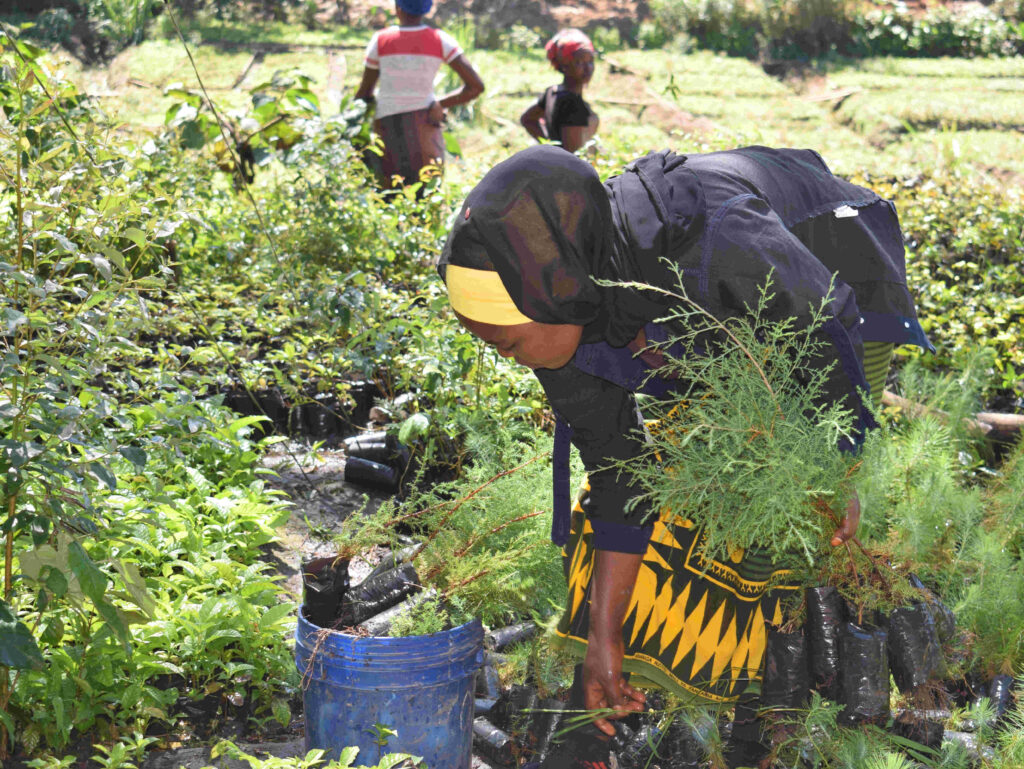
After the seedlings have been established, a variety of food and cash crops, such as maize, onions, potatoes, and other vegetables, will be ‘intercropped’ within the AOI. Since tree roots hold what water is available, the survival chances of these vegetables are enhanced.
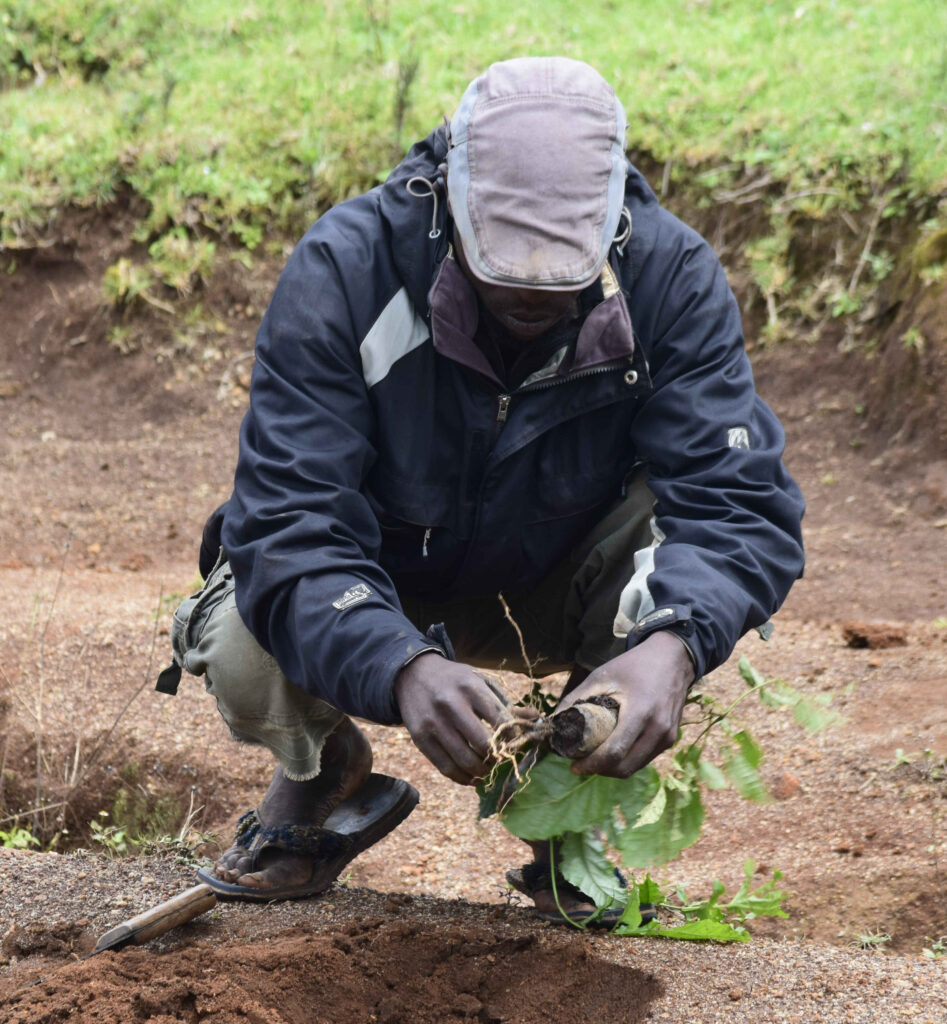
After less than one year, the ground-level photos show a great improvement in healthy plant life in the AOI. Note the uniformity of the vegetation, i.e., large bare spots no longer exist.

This increased plant activity is confirmed by a satellite image from June 2021.
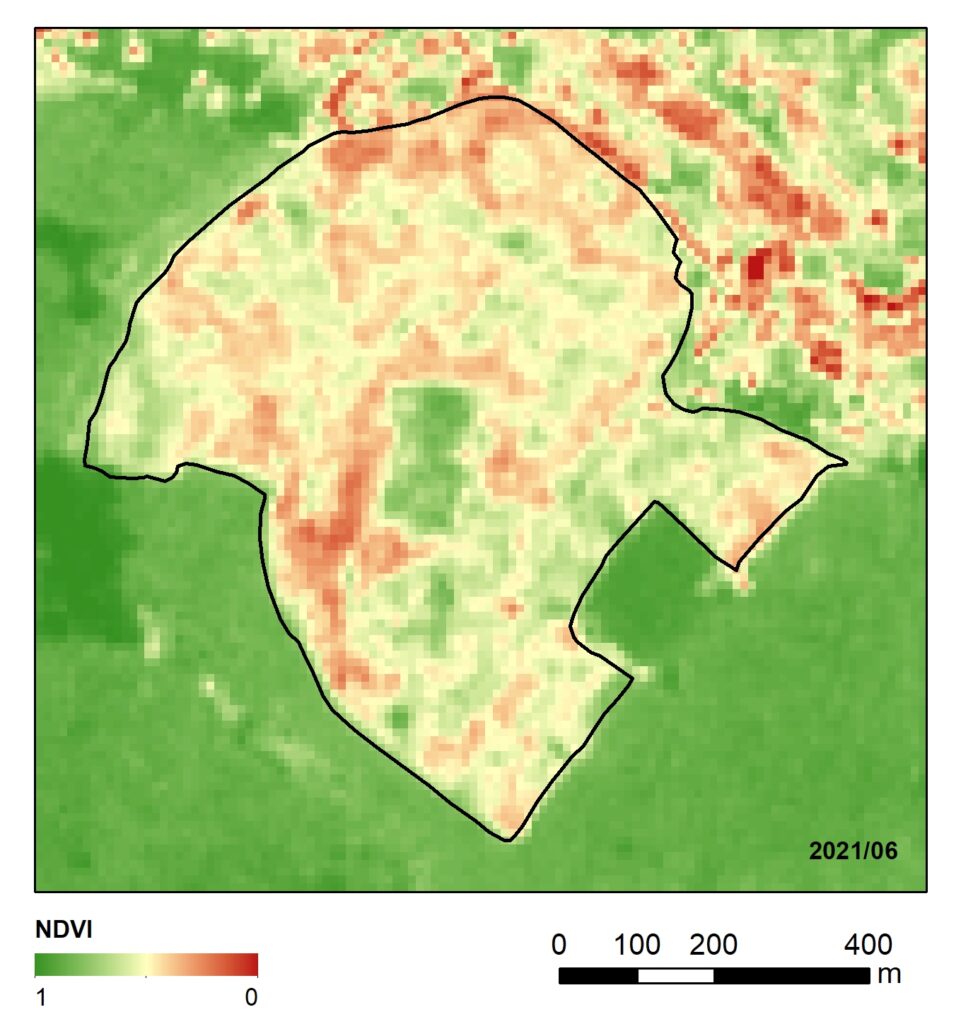
While there remains a long way to go, this NDVI image from June 2021 reveals a vast improvement in just one year.
The local villagers will be able to intercrop for up to six years, after which the trees will grow so large that they block out too much sunlight. And while 80,000 seedlings were planted in the area in 2020, the total number of adult trees should settle into the 40,000 – 50,000 range, i.e., about the level from 2017. The reasons for the drop-off are due in part to natural selection: healthier trees will grow more quickly and crowd out the lesser trees. Also, after about six years, local villagers can start selectively harvesting some of the lower trees, with minimal damage to the ecosystem.
ForestPlanet is glad to bring together all the various participants to make this happen, including the Friends of Usambara Society, GMV, and of course our generous individual donors and corporate partners. Positive changes can happen quickly, and affordably, when we all work together!
—
Updated November 17, 2021
One year ago, our partners in Kwezizi planted 80,000 trees. What a difference a year makes! Members of the local communities have been keeping the soils free of weeds, monitoring tree root development, and otherwise taking care of the young trees, all in preparation for the next planting.
The next phase will involve planting a variety of food and cash crops among the young trees. These crops will include maize, onions, potatoes, and other vegetables. The new tree roots hold what water is available, enhancing the survival chances of these vegetables.
Crop planting will coincide with the “short rains” that fall in November and December, and some of these crops will be ready for harvest as soon as February 2022. Check back with us then to see the bounty made possible by trees!
